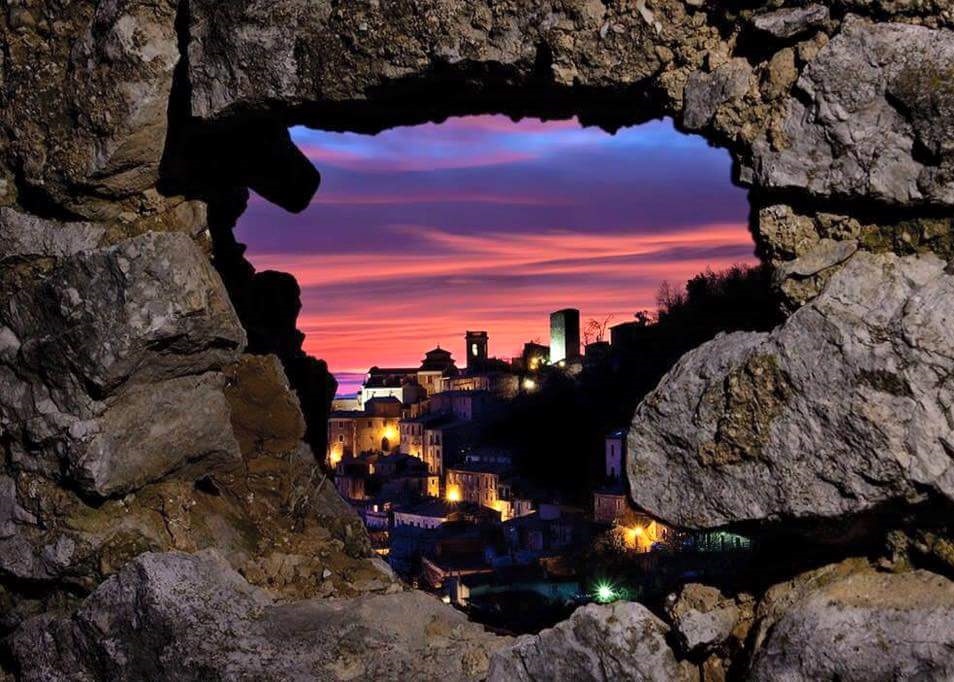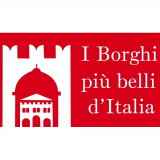
 I borghi più belli d'Italia
I borghi più belli d'Italia
Italian Little Italies: San Donato Val di Comino, land of passage
- WTI Magazine #96 Oct 14, 2017
-

 I borghi più belli d'Italia
I borghi più belli d'Italia
San Donato is a village of ancient houses leaned on the slopes of the Apennines, on the cliffs of Monte Pizzuto, covered by beech forests. The Val di Comino opens southwards as a bowl, with its tiny country streets and prismatic fields of green and yellow; northwards, beyond mountains, there is the wilderness of the National Park of Abruzzo, in its Lazio side.
Inside this landscape, at 700 m. of altitude, the village is like a labyrinth of stone characterized by winding tiny and narrow streets, covered passages - spuort’ in local dialect, small squares, in a perfect medieval design that had defensive and climatic necessities (the tortuosity of the alleys breaks the impetus of freezing wind).
Going up Via Maggiore street – opened in the 16th century due to the development of the country towards the valley – we meet the stone called “of the scandal” (the 16th century.) because the insolvent debtor had to be seat on it. At the end of the street we intercross the spuort´ of Fra Tommaso, illustrated – such as other covered passages that later on became places of memory of the village – by two paintings showing the life of the monk.
Once you surpass piazza Coletti square with its meridian (1891) you go up via Orologio street entering the medieval village through Porta dell’Orologio (13th century). The legend says that three crosses under the gate can be attributed to three bandits that were hung here in the 16th century. Steep staircases and alleys rich of mystery, lead up to Largo San Donato, the heart of the ancient castle.
Here, there is the Sanctuary of San Donato, that has its origin from little Benedictine Abbey mentioned in a document in 778, and afterwards enlarged and modified until it assumed the actual aspect, similar to the one it had in the 17th and 18th century. The internal of the Sanctuary, with a nave and two aisles has a vault decorated with plastering, friezes and gilding. The wall paintings of Gaspare Capricci (the 18th century) show life episodes of the martyr from Rieti. Torre (Tower of the 13th century), that guards over the Sanctuary and the whole countryside, was built by Counts of Aquino. It is square - shaped, and controls the pass towards Abruzzo and it is oriented according to the sun declination: like a compass, it indicates four cardinal points, the direction of Montecassino and the position of the sun during equinox and solstice. Before coming back to the Sanctuary, it is beautiful to feel embraced by atmosphere of the oldest Cannesse agglomerate, its alleys and ‘spuort’, such as one of Origini, that with its wooden girders is one of the most beautiful.
You exit castrum through the Arco di San Donato (the 14th century) whose ogive structure is typical for the late gothic period. Following the itinerary, you can come down along via Pedicata street to the Duomo, with its origins from the 14th century but enlarged in the 18th century, when its floor plan became basilican and the elegance of baroque style triumphed. The artistic chorus and the valuable pipe - organ are to be noticed. They are made in the workshop of the Catarinozzis of Subiaco. Under the big altar, a glass urn preserves the body of Saint Costanza.
In front of the Duomo there is beautiful Palazzo Quadrari (from 18th century) with its facade from the 19th century made by maestros of Vanvitelli school and Roman epigraphs along the wall of the “stairs of honour”. You have to notice, walking in the old town centre, the keystones that decorate palaces: little works of art rich of symbolism that identify the social class of the family. And the mascaron painted on the doors, that had the aim to move away the “monacello”, local elf, phantom of a dead baby, that is still present in the southern folklore.
The name
It derives from the cult of Saint Donato d’Arezzo, that was imported in Val di Comino valley by the Longombard Dukes of Spoleto in the 8th century. Benedictinian monks dedicated the Abby (today Sanctuary of Saint Donato) to the bishop and martyr who lived in the 3rd century, and round which the Castrum Sancti Donati fortress village was developed.
The product
The oil production is linked to San Donato from the Middle Age, when it was produced by Benedictines monks in the grounds around the tower. Olives do not need to be processed chemically, because they are cultivated at the height of over 700 meters and, once picked, they are squeezed and cold - pressed. The oil has green color, slightly opaque, with fruity and soft taste. The cheese of sheep and goats are excellent too: from fresh ricotta to the excellent Marzolina of San Donato that today is the “Slow Food Presidium”.
The recipe
The “cipollata” is a single course (onion, cheese and eggs), that has nothing to envy to the soupe à l´oignon. It triumphs during the feast day of Santa Costanza, the procuress of single women that here are called in a funny way, onions. Other dishes: soup of vegetables, pork cuts, contour of turnips and potatoes; “bucatini” pasta with artichokes, cussitt or lamb t’stuccia, wild vegetables and for dessert the “pigna” or puffs (The Easter menu).